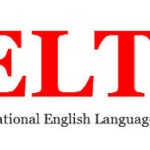Road to Ielts – Preparation and Practice – Reading. Academic Module. Practice Test 1 with Answer Sheet
Road to Ielts – Preparation and Practice – Reading
Road to Ielts – Preparation and Practice – Reading
Duration: 60 minutes
Texts for the Academic Reading test are taken from books, journals, magazines and newspapers.
A variety of tasks is used, including: multiple choice questions, identifying information, identifying writer’s views/claims, matching information, matching headings, matching features, matching sentence endings, sentence completion, summary completion, note completion, table completion, flow-chart completion, diagram label completion, short-answer questions.
Road to Ielts – Preparation and Practice – Reading – Test format – Reading
60 minutes
The Reading section consists of 40 questions, designed to test a wide range of reading skills. These include reading for gist, reading for main ideas, reading for detail, skimming, understanding logical argument and recognising writers’ opinions, attitudes and purpose.
IELTS Academic test – this includes three long texts which range from the descriptive and factual to the discursive and analytical. These are taken from books, journals, magazines and newspapers. They have been selected for a non-specialist audience but are appropriate for people entering university courses or seeking professional registration.
IELTS Academic Reading description
| Paper format | Three reading passages with a variety of questions using a number of task types. |
| Timing | 60 minutes |
| No. of questions | 40 |
| Task types | A variety of question types are used, chosen from the following; multiple choice, identifying information, identifying the writer’s views/claims, matching information, matching headings, matching features, matching sentence endings, sentence completion, summary completion, note completion, table completion, flow-chart completion, diagram label completion and short-answer questions. |
| Sources | Texts are taken from books, journals, magazines and newspapers, and have been written for a non-specialist audience. All the topics are of general interest. They deal with issues which are interesting, recognisably appropriate and accessible to test takers entering undergraduate or postgraduate courses or seeking professional registration. The passages may be written in a variety of styles, for example narrative, descriptive or discursive/argumentative. At least one text contains detailed logical argument. Texts may contain non-verbal materials such as diagrams, graphs or illustrations. If texts contain technical terms a simple glossary is provided. |
| Answering | Test takers are required to transfer their answers to an answer sheet during the time allowed for the test. No extra time is allowed for transfer. Care should be taken when writing answers on the answer sheet as poor spelling and grammar are penalised. |
| Marks | Each question is worth 1 mark. |
IELTS Academic Reading – how it’s marked
The Academic Reading test is marked by certificated markers, who are regularly monitored to ensure reliability. All answer sheets, after being marked, are further analysed by Cambridge Assessment English.
Band score conversion
A Band Score conversion table is produced for each version of the Academic Reading test, which translates scores out of 40 into the IELTS 9-band scale. Scores are reported in whole bands and half bands.
DOWNLOAD THE PDF FOR FREE
Click here for more IELTS Papers




